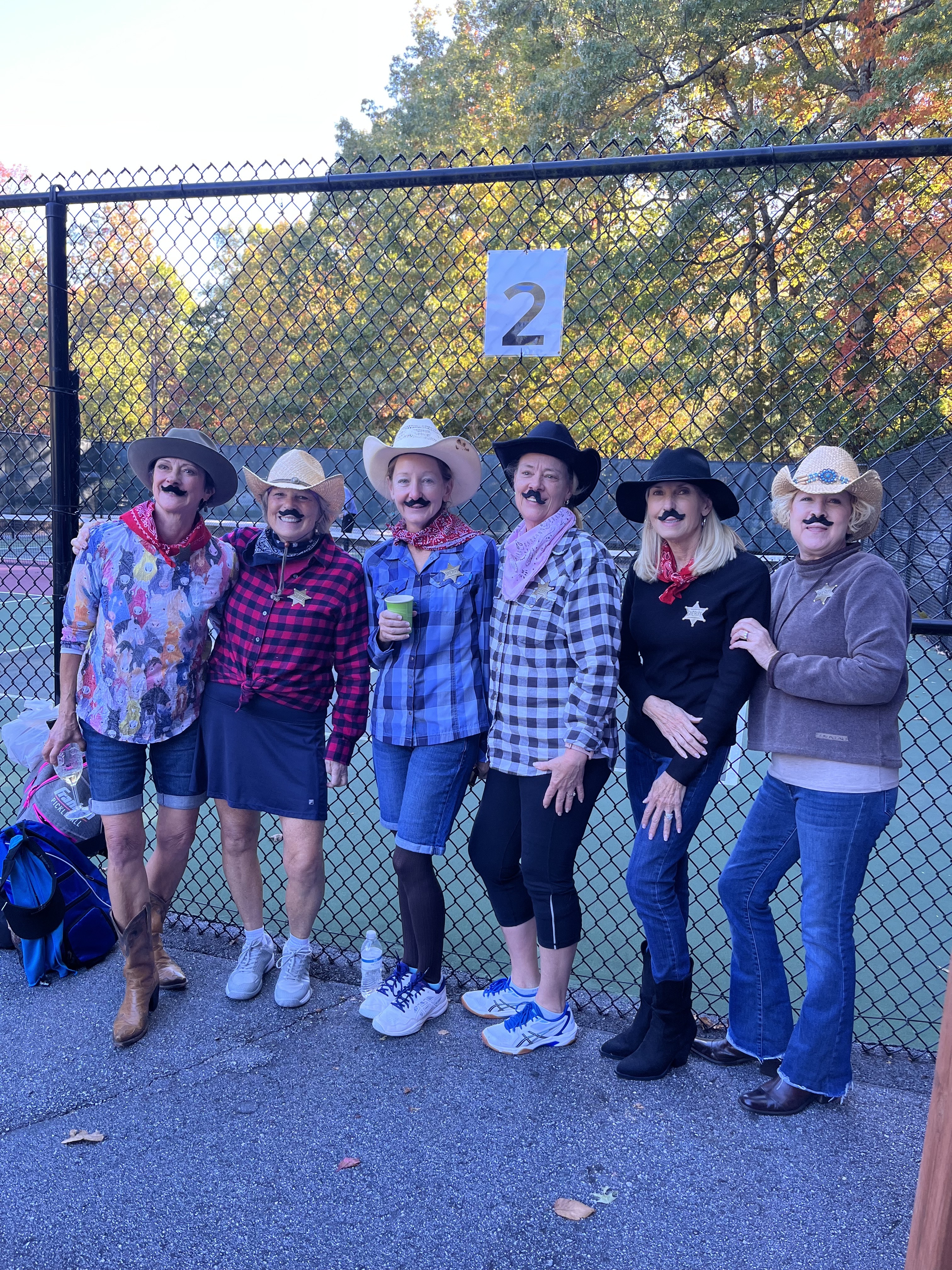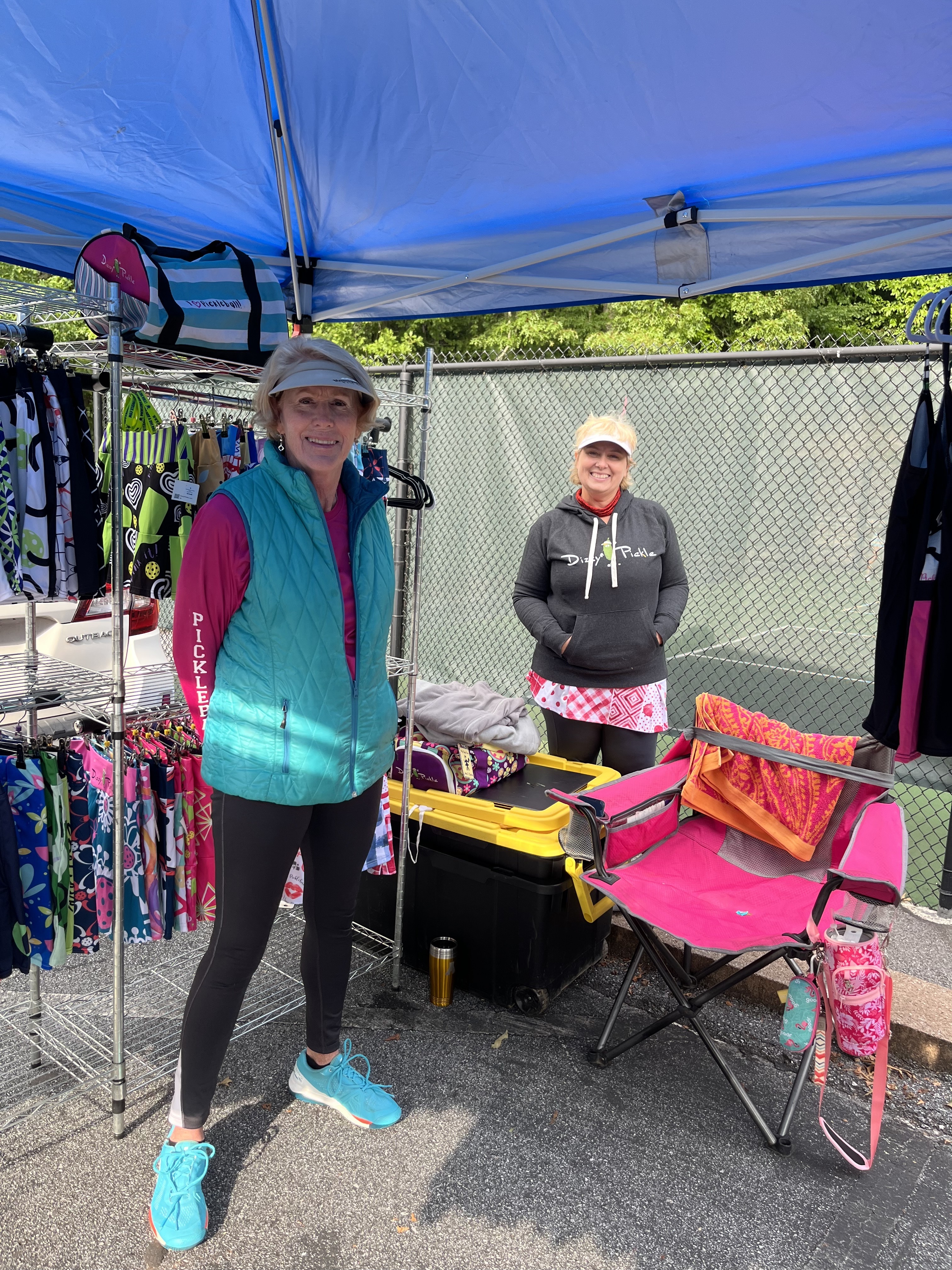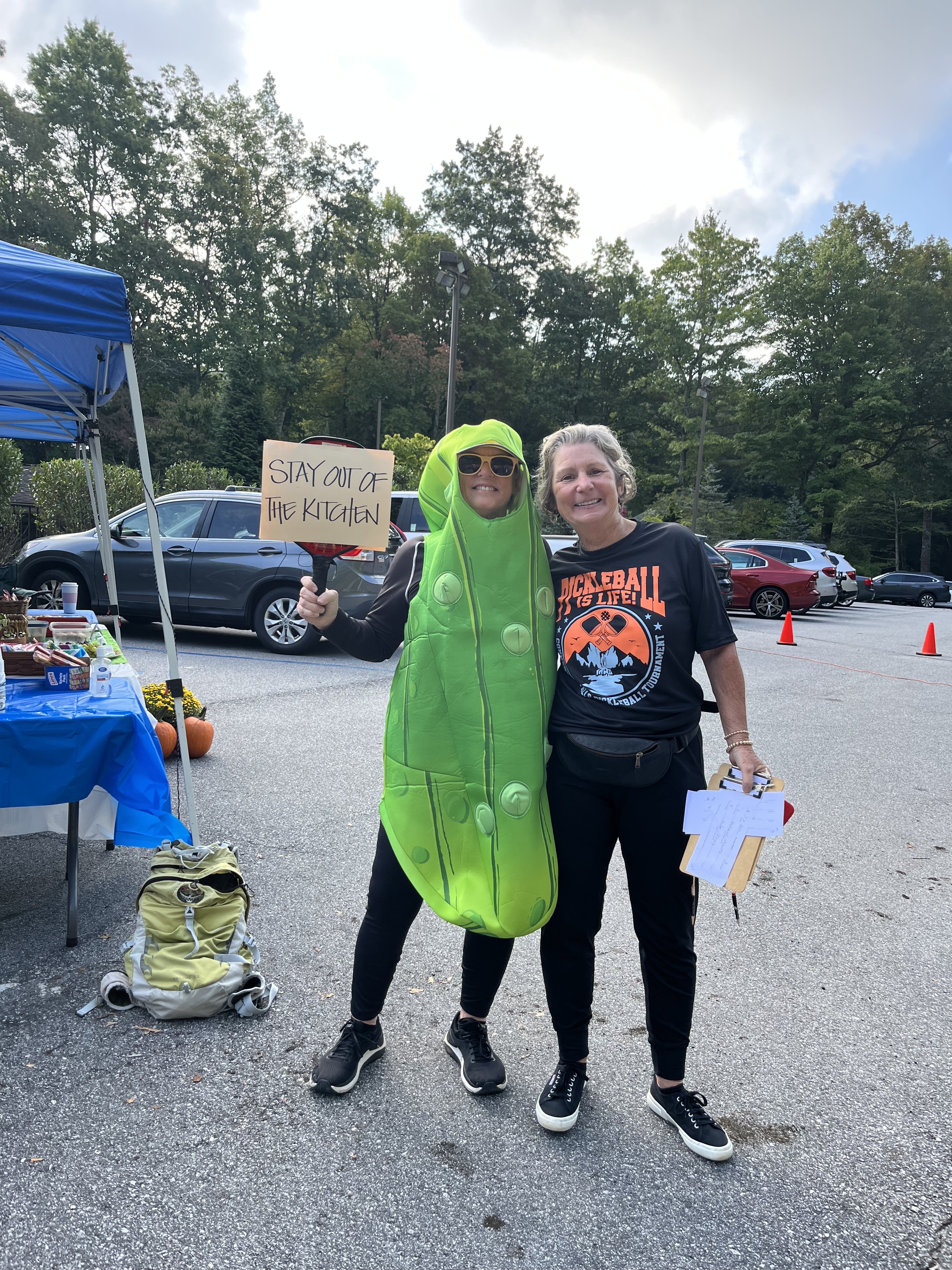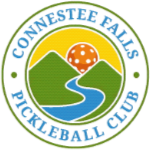
Happy Fall Y’all!
Hope you’re enjoying the gorgeous colors of fall here in Connestee Falls!
Since our last newsletter, we’ve had our annual tournament, a social and a new pickleball board in place as well.
In this jam packed issue, we’ve got the pics of all of the above, scrapbook style 🙂
Here’s a super duper question: do you know your DUPR? What’s a DUPR you ask, well…stay tuned.
Plus, a timely article on “No Man’s Land” and why it’s been renamed the Transition Zone–and how to navigate it.
Pickle ON!


Ever wonder where you are level wise when it comes to pickleball?
In pickleball, one method that has been developed for this purpose is the DUPR system. Let’s dig into what DUPR is, how it operates, and how you can determine your score.
What is DUPR?
DUPR stands for “Dynamic Universal Pickleball Rating.”
It’s a system designed to rate pickleball players based on their performance in sanctioned tournaments and leagues. The purpose of this rating system is to provide a more accurate, dynamic, and comprehensive assessment of a player’s skill level compared to the traditional UTPR (Universal Tennis Pickleball Rating) or self-rating systems.
So How Does DUPR Work?
The DUPR system is “dynamic” because it constantly updates and recalibrates a player’s rating based on their recent performances.
This means that instead of waiting for a year-end evaluation or only changing after certain milestones, a player’s DUPR can change after each match they play in a sanctioned event.
Factors considered in the DUPR system include:
1. Match Outcome: Naturally, whether you win or lose a match will impact your rating.
2. Opponent’s Rating: Beating a higher-rated player will have a more positive impact on your rating than beating a lower-rated player, and vice versa.
3. Match Margin: Close matches, even if they result in a loss, might not hurt your rating as much as a lopsided loss would.
4. Recent Performance Weightage: More recent matches have a greater impact on your DUPR than older ones, ensuring the system remains dynamic and current.
How Do You Get Your DUPR Score?
To get a DUPR score, you need to:
1. Participate in Sanctioned Events: Your DUPR will be based on your performance in tournaments and leagues that are recognized and sanctioned for DUPR calculations.
2. Register with the DUPR System: Depending on where you play and the organizations that handle the ratings, you may need to register with the DUPR system or the affiliated organization.
3. Track Your Matches: While most sanctioned events will automatically report match results for DUPR calculations, always keep track of your matches, especially if you’re actively seeking to understand and improve your rating.
4. Check Regularly: Since the system is dynamic, it’s a good idea to check your rating regularly, especially after participating in a tournament. This way, you can understand how certain matches or tournaments impact your rating.
5. Engage in Competitive Play: The more you play against various opponents, especially those with different skill levels, the more accurate and reflective your DUPR will be of your true skill level (as long as it’s a DUPR event).
Speaking of participating in sanctioned events, there is a DUPR league right here in Western NC and Connestee resident Lucio Rodrigues heads it up. If you’re interested in finding out more, send him an email: lumaro55@gmail.com

From “No Man’s Land” to “Transition Zone”
Once upon a time, there was a place on the pickleball court that no one dared to breach. No Man’s Land, the designated area of sorrow and frustration.
But enough is enough. This is 2023 and the game has evolved and that means renaming of “no man’s land” to the “transition zone” or “mid-court.”
Let’s dive into this transformation and explore its implications for today’s play.
The Transition Zone: Earning Your Way to the Kitchen
Historically, the area of the court behind the kitchen (non-volley zone) and before the baseline was colloquially termed “no man’s land.” This name suggested that players should avoid this region due to the vulnerability it presented; balls could bounce unpredictably, and players might find themselves neither here nor there, resulting in weak returns or missed shots.
However, the name “transition zone” reflects a more strategic approach.
Rather than viewing this section of the court as a vulnerable area, today’s pickleball players see it as a transitional space, a zone where they set themselves up for success. The goal is to advance to the kitchen line effectively and strategically. But to get there, players must demonstrate skill, precision, and patience.
The Art of Transition: Key Shots for Mid-Court Success
1. The Third Shot Drop: Arguably the most critical shot for transitioning to the kitchen, the third shot drop is a soft shot that arcs gently over the net and lands in the opponent’s kitchen. When executed correctly, it forces the opponents to lift the ball, allowing the hitting team to advance and take control at the kitchen line.
2. Drives: While the third shot drop is about finesse, the drive is about power and speed. This shot can surprise opponents and push them back. However, it’s crucial to mix in drives with drops to keep the opposing team guessing.
3. Volleys: If you find yourself in the transition zone and the ball is at a height where you can hit it without letting it bounce, a well placed volley can be an excellent way to apply pressure and continue your forward movement.
Embracing the Evolution
The shift in terminology and strategy underscores a broader evolution in pickleball.
Players are becoming more strategic, understanding the nuances of court positioning, and recognizing that every section of the court has its purpose. The transition zone is not a place to be feared but a place where opportunities can be created.
So respect the transition zone, hone the essential shots required for this area, and always remember that the journey to the kitchen line is as crucial as the destination.
And stop calling it No Man’s Land!

Our theme for our October social was a hoedown! Big fun 

Our social chair Betsey with our costume winner!

Ron and Gail Evans

Dizzy Pickle had some cute pickleball clothes!

Penelope Pickle was a big hit!

The snack tent was always well attended 

The games were exhilarating to watch, right Mark? 
That’s it for this edition–see you next month!
Pickle ON!
